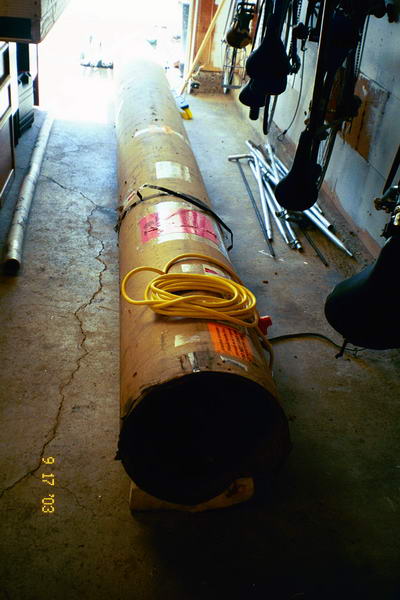
Construction Begins
Shop set up/Horizontal stabilizer
After months of interesting, difficult, and tedious research including debate with other builders, I chose the Mark 3 Xtra, and wrote the check at Oshkosh.
About a month later a 13 ft shipping tube arrived at the
house.
Full of aluminum
tubes.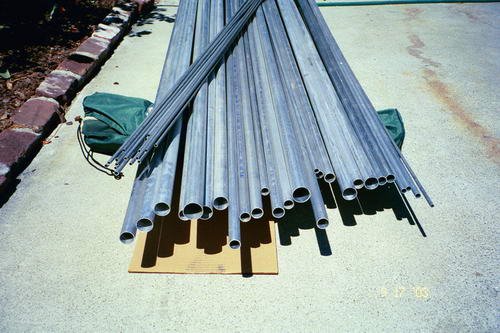
I understood intellectually what I was getting into, but the day I laid the raw metal out, the scope of this project began to sink in.
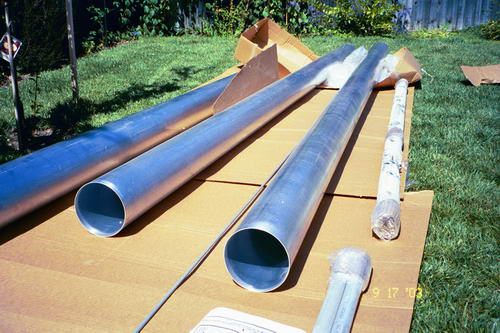
I asked my brother to help me find or build a perfectly flat table. One day he just showed up with it, strong enough to park a car on. He also used his planer to make several hundred perfectly square blocks needed to construct the jigs used to build the plane.
First by drawing a horizontal stabilizer in pencil, on the table, then screwing in the blocks of wood to hold the tubes in place.
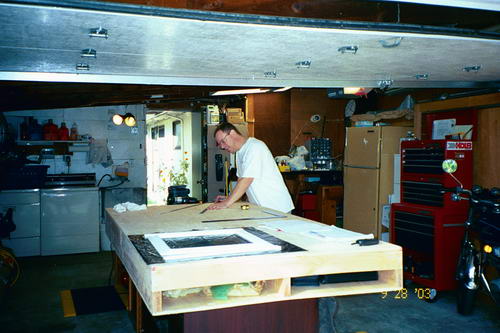
Each tube was cut with a hacksaw, then deburred, and the ends polished with sandpaper; no rough edges anywhere to cause stress cracking. This last step got out of hand for the first few tubes: I spent 15 minutes polishing one end until I could see a reflection in it. By the time I had polished several hundred tubes, I was down to about 20 seconds.
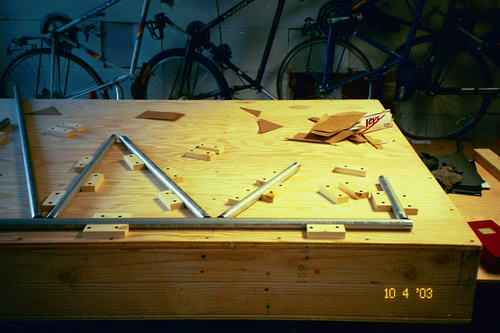
Each corner needed a small piece of aluminum sheet metal, a gusset, to join the tubes together using rivets. I chose to use a horizontal stabilizer design prototyped but not currently in use, so the plans didn't include the gusset shapes. I took cardboard from soda boxes and made my own, then transfered them to the sheets of aluminum provided in the kit.
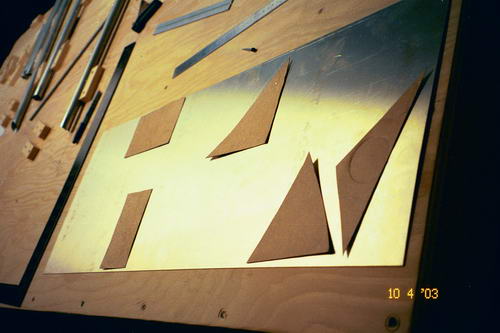
Drew the shapes onto the aluminum and cut them
out.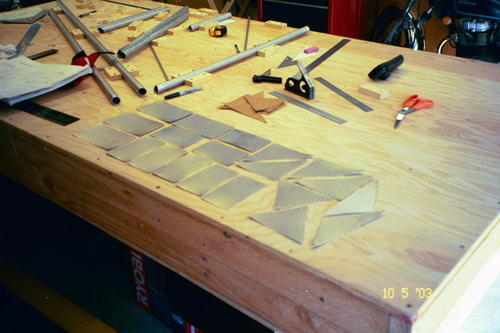
I drilled holes for rivets and secured the gussets with temporary rivets called clecos. The gussets were shaped with a rubber mallet and a steel pipe held in a vise to match the curve of the tubes hold together.
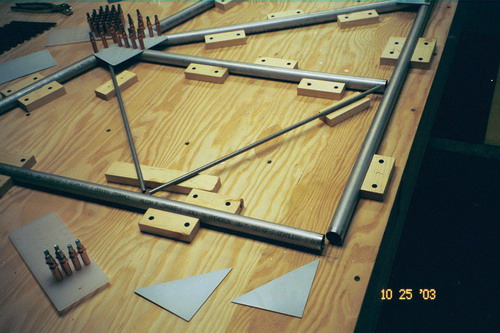
I used the clecos to build an entire assembly, so it could be disassembled, scrubbed clean, alodyned, painted, and finally reassembled with the clecos. One by one the clecos are replaced with rivets dipped in paint to eliminate metal to metal contact thereby preventing a risk of future corrosion. All the corrosion prevention steps multiply the assembly time. However, after working on corroded airplanes over the years, I wanted to be sure that the salt air I would operate in couldn't cause corrosion.
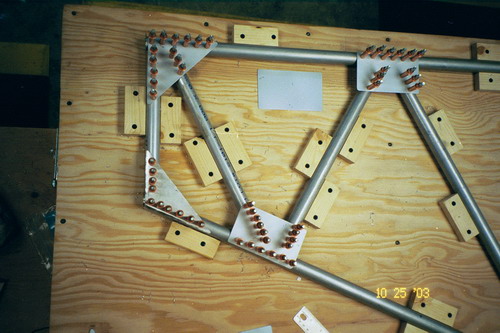
The rivets are dipped in epoxy before they are set to eliminate metal to metal contact, therby reducing the chance of corrosion.